Did you find this blog in your computer junk file? I have a feeling today’s blog might end up there because of the title. But don’t worry, it’s not what you might think. So, I hope everyone took my advice from our last blog and checked their junk file.
Today, we are going to visit with some occupants of Paris’s best-known cemetery: Père Lachaise. We’ll start with Delphine Palatsi and then introduce you to some of the inhabitants, who like Delphine, you’ve likely never heard of. However, I guarantee you that they all had very interesting lives.
Most of the books written about Père Lachaise contain very famous and well-known celebrities such as Oscar Wilde, Edith Piaf, Colette, and naturally, Jim Morrison. However, I want to be different so, my future book, Where Did They Bury Jim Morrison? A Walking Tour of Curious Paris Cemeteries will take you around and introduce you to people who have disappeared into the black hole of history. The common thread is that all of them led interesting lives and in one way or another, were historically significant in their day ⏤ some even left legacies we appreciate today. You’ll visit Baron Haussmann, Jane Avril, Ferdinand de Lesseps, and Guy Môquet as well as some occupants (e.g., Rin Tin Tin ⏤ the dog, remember?) of other curious Paris cemeteries.
In the meantime, let me give you a sneak preview and introduce you to Sex Toy and some of her Père Lachaise neighbors including the most erotic effigy in the cemetery (or any other cemetery for that matter).
Did You Know?
Did you know that when all of us are gone, our children are not going to want most of the “stuff” we’ve accumulated over our lifetime? Their generation has no desire to hold onto great grandma’s set of china plates or grandma’s complete set of silverware (and I mean real silver, not the silver-plated stuff). Your stamp collection? You might as well start to learn how to become a seller on eBay. None of this stuff has any meaning or significance to them.
However, many of us have kept lots of paper. This is paper which documents parts of our lives as well as the people in our lives. A personal example I can use is the two-and-a-half-inch stack of Aerogramme Luchtpostblad (a sheet of light paper folded and sealed to form a letter for sending by airmail) which my father gave me years ago. These are letters my mother wrote to my grandparents when we were living in Holland during the mid-1960s. It seems my grandmother kept every letter and before she passed away, gave the stack of letters to Mom. The letters pretty much document most of our years living in Holland and highlight events I had forgotten about or rekindle an untold story to an event that I do remember.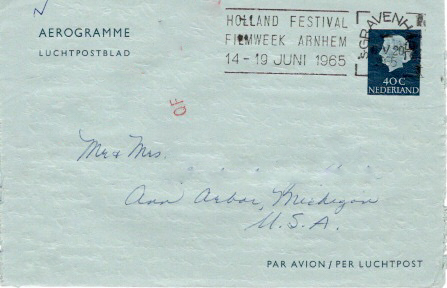 I’m not too sure if our children want these letters but if they don’t, I’m going to brainwash our grandchildren into believing they need them. Better yet, I’ll make it a condition of taking the letters (and the silverware) if they want to get their grubby little hands on our art collection (just kidding kids ⏤ well, sort of).
I’m not too sure if our children want these letters but if they don’t, I’m going to brainwash our grandchildren into believing they need them. Better yet, I’ll make it a condition of taking the letters (and the silverware) if they want to get their grubby little hands on our art collection (just kidding kids ⏤ well, sort of).
Let’s Meet Delphine Palatsi – Division 28
Let’s stop by and pay our respects to Sex Toy. Yes, she went by this name ⏤ she might have had it legally changed because it’s on her grave. Delphine Palatsi (1968-2002) was a groundbreaking Parisian DJ specializing in electronic or techno music. I’m not too sure what the technical or street names are for this type of music. You see, like the song says, “I like that old time rock n’roll.”

Covered from head to feet in tattoos, Delphine also wore tribal marking tattoos above her eyes. In appearance as well as music, she was a groundbreaking personality in the Paris club scene. Delphine started out in women’s and lesbian bars and it was around that time when she became known as Sex Toy. Her popularity grew and soon, Sex Toy was invited to all the major clubs as well as running the shows for major fashion design companies. Sex Toy was in constant demand as a DJ from New York to Japan to Moscow. For her fans, Delphine was almost on the same level as a rock star. Watch DJ Sex Toy at work in a Paris club here. Sex Toy died of a heart attack in 2002 just short of her 34th birthday. No cause of the heart attack has been given. The mayor of Paris at the time, Bertrand Delanoe, was a huge fan of hers and he insisted Sex Toy be buried in Père Lachaise. You can visit her in the middle of Division 28. Remember when Prince changed his name to a symbol? I wonder if Prince has that “name” embedded on his grave?

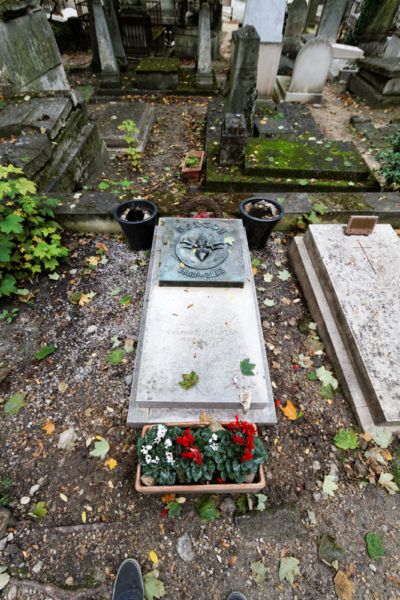
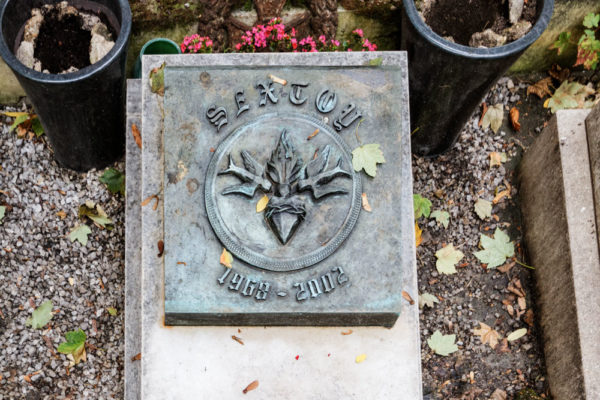
Let’s Meet Sophie Blanchard – Division 13
Ever wonder who was the first woman to die in an aeronautical accident? Come on, I’m sure that’s been eating away at you for many years. Well, it was Sophie Blanchard (1778-1819). Married to ballooning pioneer, Jean-Pierre Blanchard, Sophie was the first woman to work as a balloonist and after Jean-Pierre was killed in 1809 as a result of his injuries after falling out of a balloon, Sophie continued earning money by putting on balloon demonstrations and she developed an international reputation for her exploits. Napoléon named her, “Aeronaut of the Official Festivities” and upon the restoration of the monarchy in 1814, Sophie was named the “Official Aeronaut of the Restoration” –see, the Emperor and King did have something in common. Sophie had her share of balloon mishaps but in 1819, she had her last and final accident. Sophie was dressed in a beautiful white gown and wore a white hat with ostrich plumes when she climbed into the balloon basket for a demonstration over Tivoli Gardens in Paris (these gardens no longer exist). She struggled to get lift and began shedding ballast. Once clear of the trees, Sophie waved her flag and launched fireworks from inside the balloon. Immediately, the balloon was engulfed in flames and began to descend rapidly. The wind moved the balloon towards the rooftops of homes on the Rue de Provence and the basket struck one of the houses. Unfortunately, Sophie was thrown from the basket and fell into the street where she died instantly from a broken neck. See, this is why Sandy and I did not go up in the hot air balloons in Egypt.
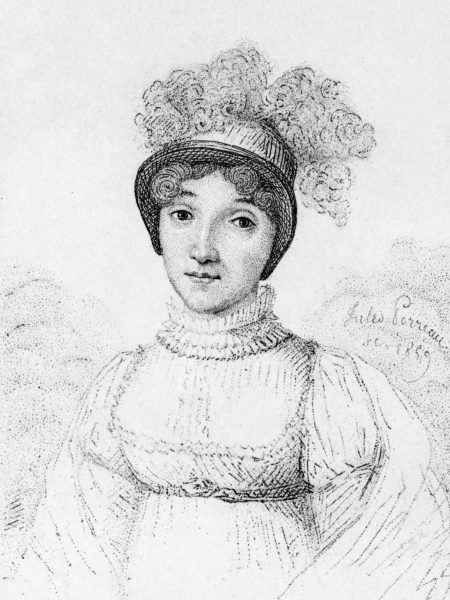
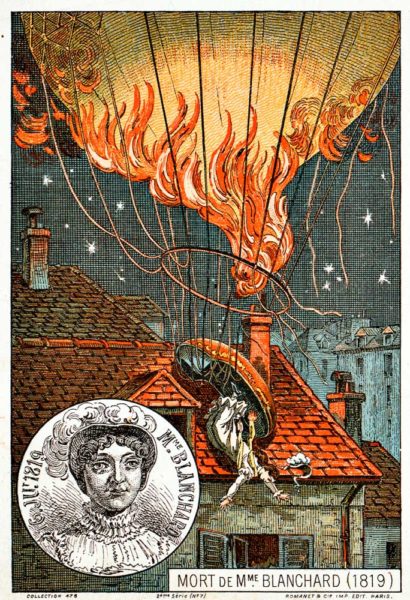
A collection was taken up by the owners of Tivoli Gardens to raise money for Sophie’s children. Lo and behold, they found out she didn’t have any children. So, the money was used to erect the monument you see today over her grave. It is a representation of her balloon in flames moments before she was killed.
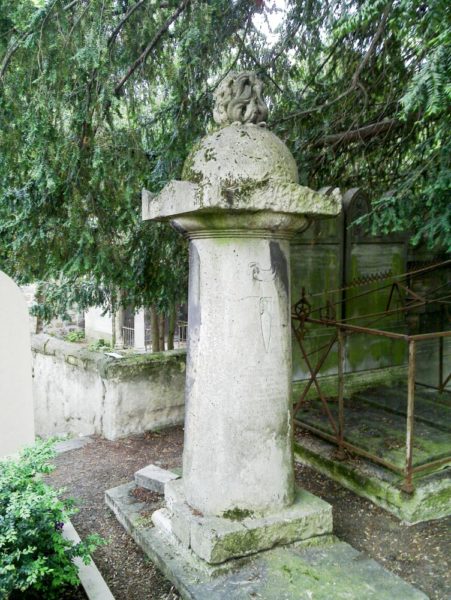
Let’s Meet Victor Noir – Division 92
During his day, Victor Noir (1848-1870) was a symbol of opposition to the dictatorship of Emperor Napoléon III, nephew of Napoléon. In death, Victor is a symbol of fertility and beats out Sex Toy for the most erotic grave in Père Lachaise.
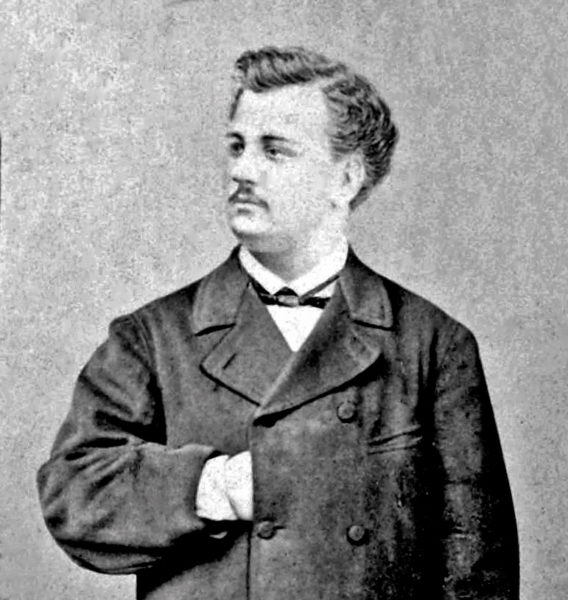
Two competing Corsican newspapers in 1869 were the center of a political argument: La Revanche was a radical publication espousing anti-emperor rhetoric while L’Avenir de la Corse was a loyalist paper defending Emperor Napoléon III. On 30 December 1869, L’Avenir de la Corse published a letter written by Prince Pierre Bonaparte, great-nephew of Emperor Napoléon and cousin of the current emperor. In his letter, Bonaparte called the staff of La Revanche cowards and traitors.
At the time, Victor was a journalist at another newspaper, La Marseillaise, whose left leaning publisher and editor publicly supported La Revanche. The editor of La Marseillaise, Paschal Grousset, was sympathetic to La Revanche’s staff and demanded satisfaction via a duel with Bonaparte. He picked Victor as one of his seconds. It was Victor’s responsibility to set the terms of the duel with Bonaparte’s seconds. Instead, Victor contacted Bonaparte directly but when he met with him on 10 January 1870, the prince declined Grousset’s challenge. Bonaparte labelled Victor as Grousset’s “menial” to which Victor slapped the prince’s face. Bonaparte pulled out a revolver and shot Victor who died immediately. Bonaparte was tried and acquitted of murder. This did not go over well with the citizens who were tired of Napoléon III. Violent demonstrations and riots ensued ⏤ eight months later, after France lost to Prussia, Napoléon III fled the country never to return.
Okay, so what does all of this have to do with Victor’s effigy? The sculpture memorializing Victor lays prone over his grave. It’s almost as if the sculptor (Jules Dalou) meant to show Victor’s dead body immediately after being shot. But wait, there is something else odd about the weathered bronze sculpture. Victor’s crotch has been rubbed so many times that it is back to the original shiny bronze whereas the rest of the sculpture is oxidized with a green patina. If you look closely, the artist gave Victor an erection and now, it is a tradition for women visitors to rub his crotch and kiss his lips. These erotic gestures are thought to enhance fertility, ensure a happy sex life, and in some cases, bring along a new husband within a year. At this point, I will refrain from any Viagra jokes.
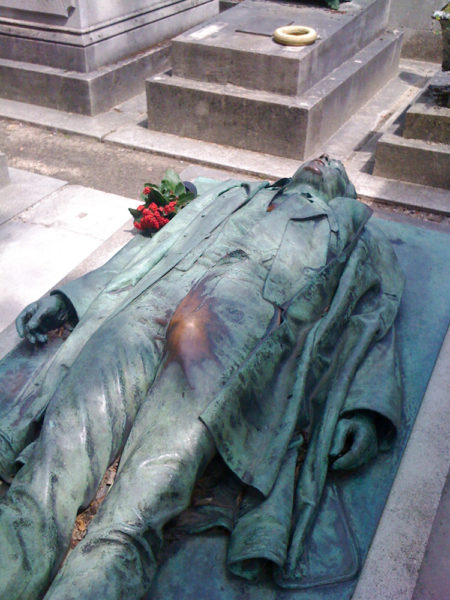
In 2004, the government erected a fence around Victor’s grave. The women of Paris protested, and the fence was torn down. To heck with the farmers and train conductors, this was a protest worth supporting.
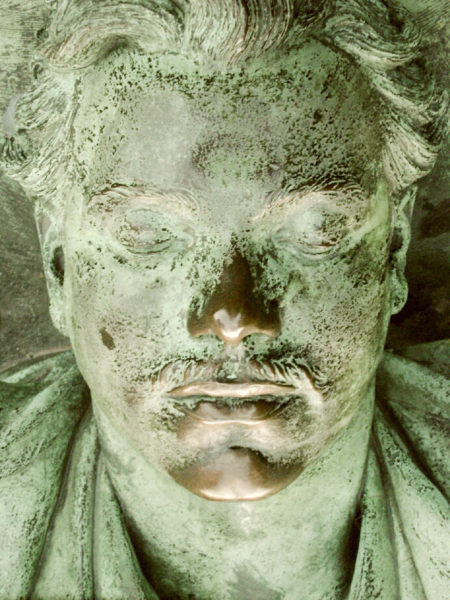
Let’s Meet Sir Richard Wallace – Division 28
You can see evidence of Sir Richard Wallace (1818-1890) and his charitable acts in a hundred locations while walking around Paris. They are known as “Wallace Fountains” and some people consider them as icons of Paris. Read the blog The Wallace Fountains here.
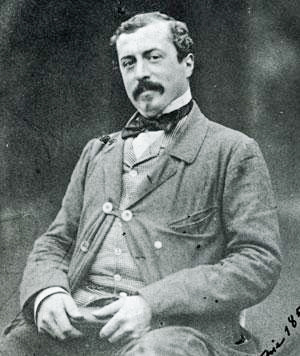
Despite being the illegitimate son of the 4th Marquess of Hertford, Sir Richard inherited his father’s English fortune and began a legacy of philanthropic behavior in Paris and other parts of the world. He was educated in Paris and was working there when the Prussians laid siege to the city in 1870. During the four-month siege, Sir Richard donated millions of francs to the Paris government as well as founding a new hospital; both of which earned him the undying gratitude of the Parisians. Two years later, after noticing a lack of free potable water for the citizens, Sir Richard donated enough money to build and install more than one hundred drinking fountains.
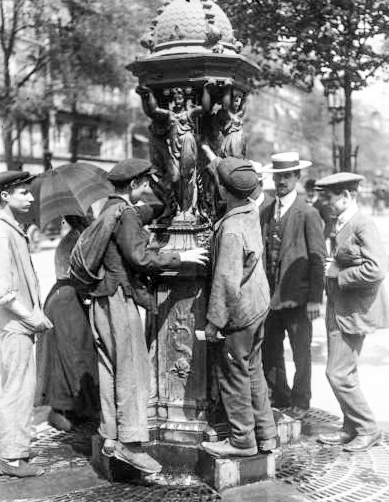
Sir Richard personally designed the four models: large, small, colonnade, and the wall mounted model. Today, there are sixty-seven large models scattered around the city while eleven small models have survived. There are two colonnaded fountains and one wall-mounted model remaining in the city. Most of fountains still work and are used by the Parisians. During Sir Richard’s day, the fountains were considered to keep people healthier (they no longer had to drink the water from the Seine) and the temperance movement thought free water would keep people from drinking alcohol. I wonder which came first, the Wallace Fountains or the public pissoirs? Read the blogs The Pee Ladies of Paris here and Please Don’t Pissoir in Public here.
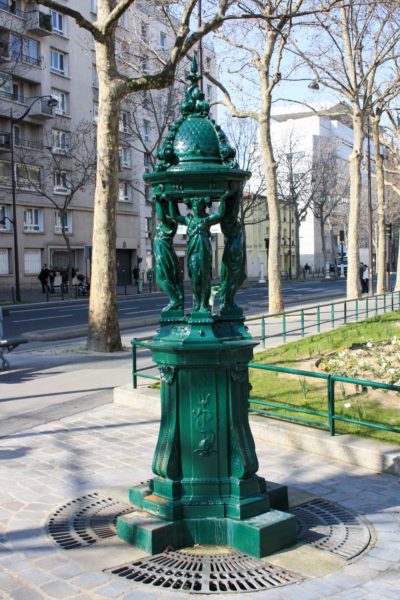
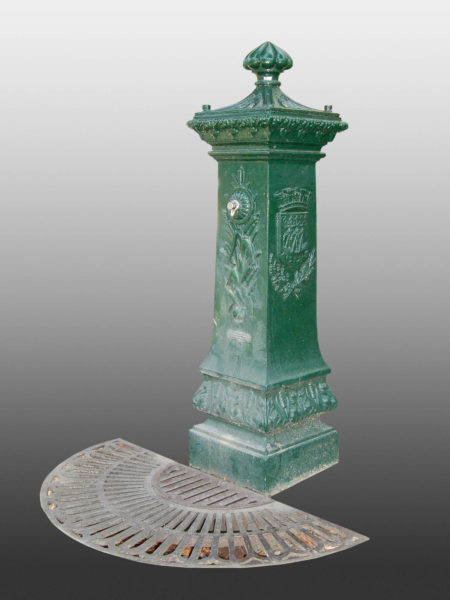
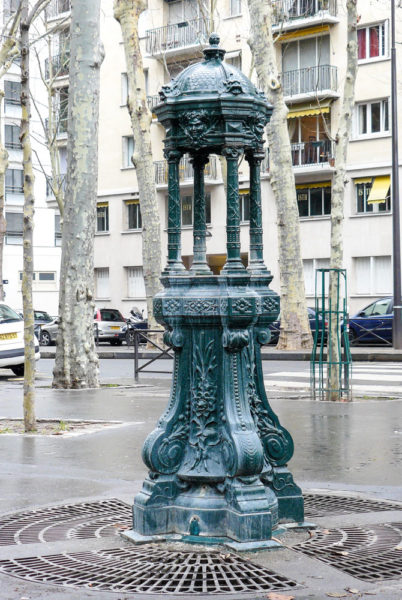
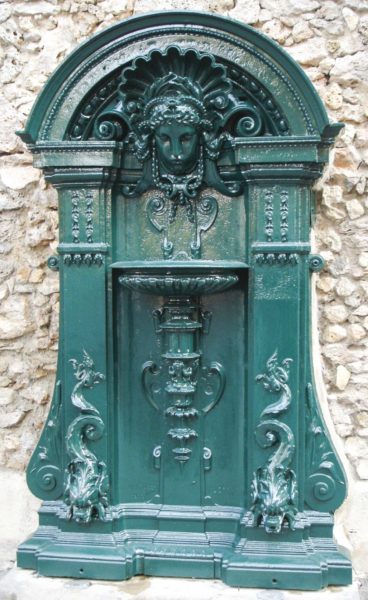
Lets Meet Éléonore Duplay – Division 34
Éléonore Duplay (1768-1832) was the daughter of Maurice and Françoise-Éléonore Vaugeois. She was the eldest of five siblings. During the French Revolution, the Duplay family lived at 398, rue Saint Honoré. This historic street dates back to medieval times and was the route taken by the carts carrying the Revolution’s victims from the Conciergerie to the guillotine in the Place de la Révolution (today, Place de la Concorde).
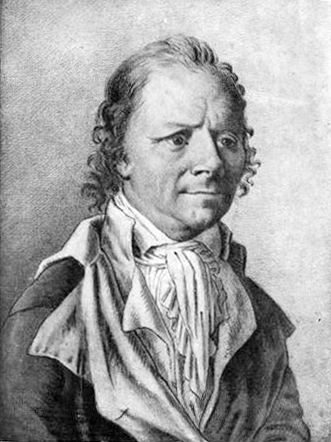
The Duplay’s place in history was assured when they offered to rent one of their rooms to the notorious Jacobin and leader of the French Revolution, Maximilien Robespierre (1758-1794). Overtime, Éléonore and Robespierre became quite good friends. It was well known amongst the revolutionaries that Éleonore “was promised” to Robespierre. There is some debate as to whether their relationship was more than just “girlfriend/boyfriend” in the years leading to Robespierre’s downfall. What is known is that after Robespierre was guillotined, Éléonore wore black the rest of her life and never married. Around town, she was referred to as la Veuve Robespierre or, the Widow Robespierre.
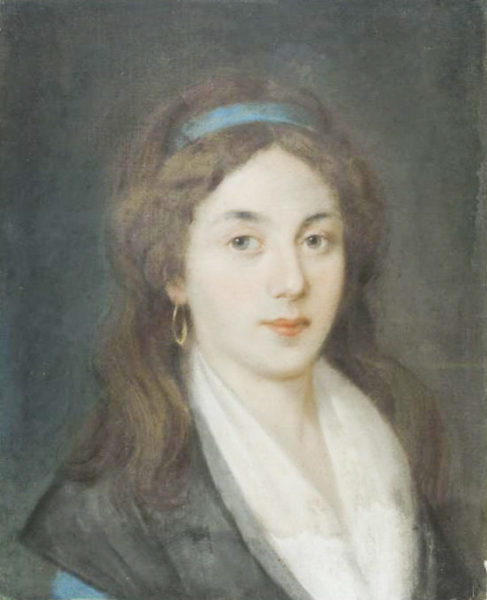
By July 1794, the Reign of Terror had been in full swing for six months and Robespierre’s buddies knew he was running out of victims and eventually, he would have them walking up the steps to the guillotine. So, they did the most pragmatic thing they could do ⏤ they turned on their leader and his faithful supporters. He was arrested on 27 July 1794 and the next day, Robespierre was put in a cart and taken to the Place de la Révolution. Along the way, the cart stopped in front of the Duplay residence. It stayed there long enough for the citizens to curse him, spit on him, and throw rotten food at him (they figured out it was Robespierre who was responsible for their relatives losing their heads). The day before, Robespierre’s left jaw was shattered either in a failed suicide attempt or from bullets fired by the National Guard. His face was crudely bandaged and as they put him on the guillotine plank, the executioner ripped off the bandages and the crowd could hear Robespierre scream ⏤ at least until the blade fell. Several of his top lieutenants followed him to the scaffold however, one of them, Philippe-François-Joseph le Bas, had taken his own life on the day he was arrested. Le Bas was married to Éléonore’s sister, Élisabeth (1772-1859).
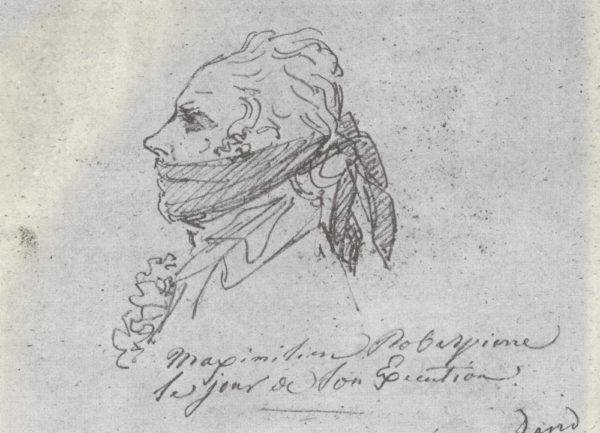
Éléonore is buried in a non-descript grave accompanied by a plaque that reads, “Éléonore Duplay, Friend of Maximilien Robespierre.” Her sister, Élisabeth Duplay le Bas is buried near her in the family grave of her husband. By the way, if you want to visit the former Duplay residence and get into the courtyard, you need the security code. I reveal that to you in my book, Where Did They Put the Guillotine? Marie Antoinette’s Last Ride.
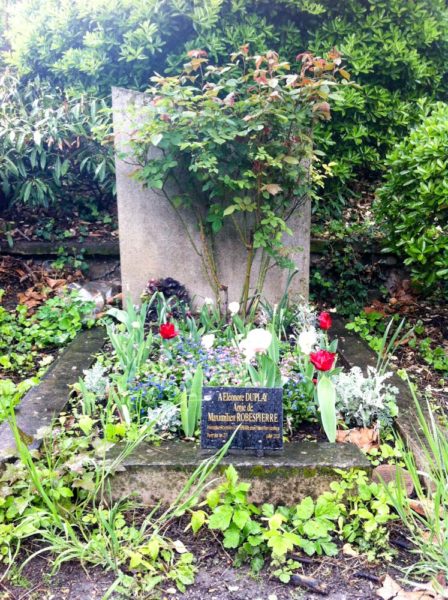
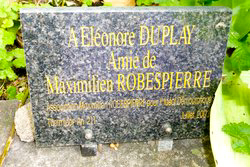
✭ ★ Learn More About Sex Toy and Other Occupants of Père Lachaise ✭ ★
Erikssön, Anna and Mason Bendewald. Meet Me at Père Lachaise. Los Angeles: Hudson-Ivy Press, 2010.
Keister, Douglas. Stories in Stone Paris: A Field Guide to Paris Cemeteries and Their Residents. Layton, Utah: Gibbs Smith, 2013.
What’s New With Sandy and Stew?
I’m in the process of trying to find the “perfect” apartment in Paris for us to stay in during our two weeks in September. I usually use Airbnb as that has worked out well in the past. Our preferred location is in the Latin Quarter on the Left Bank but this time, we’ve decided to stay on the Right Bank in the 11th arrondissement (district). One thing we learned a long time ago in selecting either a hotel or flat in Paris is to make sure it’s close to a Métro station, within comfortable walking distance to a variety of restaurants, and the neighborhood has a vibrant feel to it. The 11th is one of Paris’s up and coming neighborhoods and there are plenty of restaurants to satisfy our ethnically diverse appetites. This area spreads out to the northeast from the Bastille and north of Rue du Faubourg Saint Antoine. It borders the Marais District to the west and contiguous to the eastern edge is Père Lachaise Cemetery. I’ll make sure Sandy gets over to Victor’s grave and rubs his crotch (to ensure one of the three expectations is met).
It’s tough finding the “right” flat which provides not only the non-negotiable features (like having an elevator when the flat is on the sixth floor) but also the little ones (like early check-in when your plane arrives at 6:00 AM). And then there is price. Thank goodness we don’t need a two-bedroom flat and today, the 11th is one of the lower rent districts! Anyway, it won’t be hard to find one as it just takes time.
Thank you to all of you who subscribe to our bi-weekly blogs. It seems there isn’t a day that goes by where we don’t increase our readership. Please let your history buff friends and family members know about our blogs.
Someone Is Commenting On Our Blogs
I’d like to thank Sharon D. for her kind comments about our bi-weekly blog. It seems Sharon stumbled onto the website and read about Nancy Wake in The White Mouse (read here). Our blog led Sharon to new books on subjects like women in history, the Holocaust, and World War II. Sharon said she was grateful to find the blog and I could say, “right back at you.” Thanks Sharon for subscribing to our bi-weekly blog.
We love hearing from all of you so please keep those comments coming. If there is a topic you’d like to see a blog written about, please don’t hesitate to contact me.
Why Would You Want To Buy Our “Walks Through History” Books?
Simple. You like to travel and experience history and historical events. You like to see original buildings that had a significant impact on the people and events of the history you’re engaged with. You want to know the stories behind the brick and mortar in front of you. The walking tour books are meticulously researched so you can go directly to those sites and learn about the building’s history as well as an introduction to some of the more interesting people associated with it.
We Need Your Help
Please tell your friends about our blog site and encourage them to visit and subscribe. Sandy and I are trying to increase our audience and we need your help through your friends and social media followers.
Thank You
Sandy and I appreciate you visiting with us. We have some exciting things on the horizon and we’ll keep you updated as we go along.
Share This:
Follow Stew:
Find Stew’s books on Amazon and iBooks.
Please note that we do not and will not take compensation from individuals or companies mentioned or promoted in the blogs.
 Walks Through History
Walks Through History
Copyright ©2020 Stew Ross



I truly enjoyed the blog on Pere Lachaise neighbors…one of our favorite things to do when visiting a city or town is to wander through the local cemetery. Pere Lachaise was one of the most memorable and informative days of the month we spent in Paris.
Thanks Janet. Glad you enjoyed reading the blog. It was fun to write about these folks. Next time you are in Paris, try out some of the other lesser known cemeteries. It took us a while but we finally found the grave of the Sanson family in the Montmartre Cemetery. Six generations of French executioners are buried there. I appreciate you being a subscriber to our bi-weekly blogs and if there is a topic that interests you, let me know and perhaps we can turn it into a blog. STEW
Hi Janet, thank you for your comments regarding Paris cemeteries. Sandy and I enjoy Pére Lachaise as well. Most people only get to that cemetery but there are many more with some very interesting occupants. Once I finish the Gestapo books, I plan on writing the seventh book in my series and it will be on Paris cemeteries. Again, thanks for writing. STEW
I am a very frequent visitor to Père Lachaise….. 3 or 4 times a week on average. It’s the peace and calm and opportunities for endless exploring. Both Delphine and Eleanor are on my list of ‘regulars’. They are so lucky to be buried in the most beautiful part of the cemetery. I will subscribe to your blog!
Hello! Thank you for reaching out to us. You must know almost everyone in the cemetery. We are looking forward to writing the cemetery book and highlighting people who had very interesting lives albeit lost to history. If you have any suggestions for whom to include, please let us know. And thanks for subscribing to our bi-weekly blogs. STEW